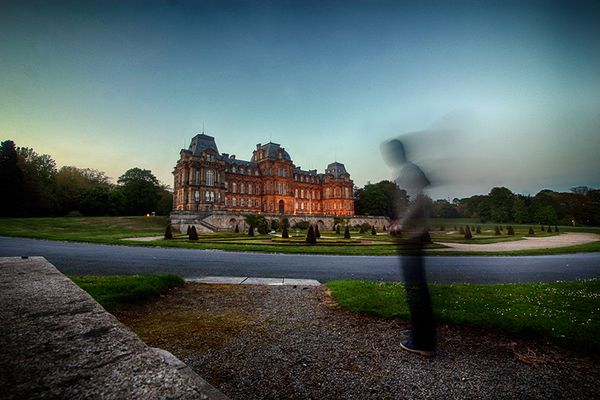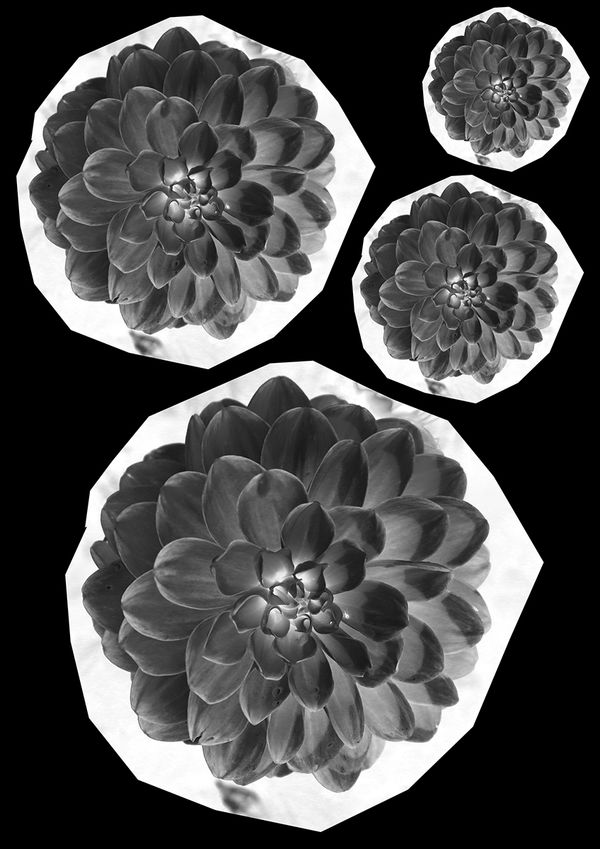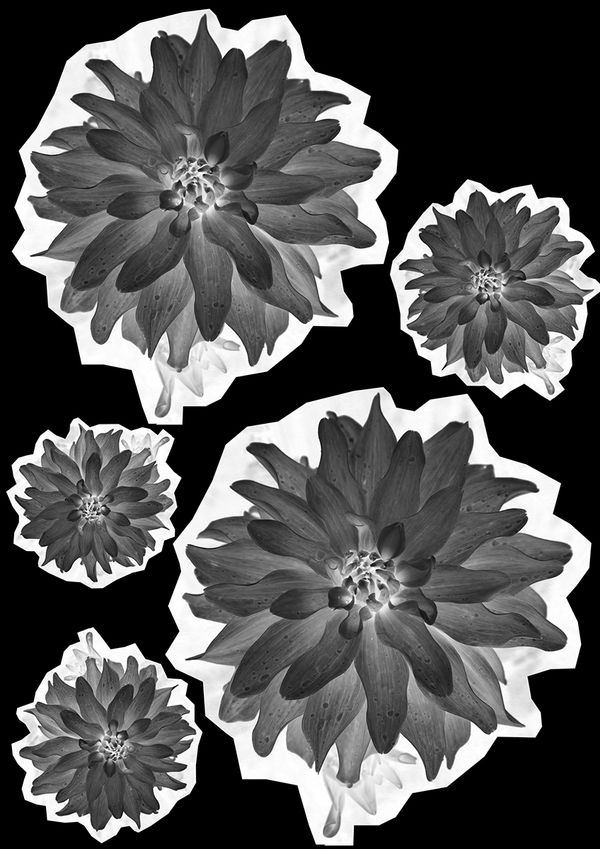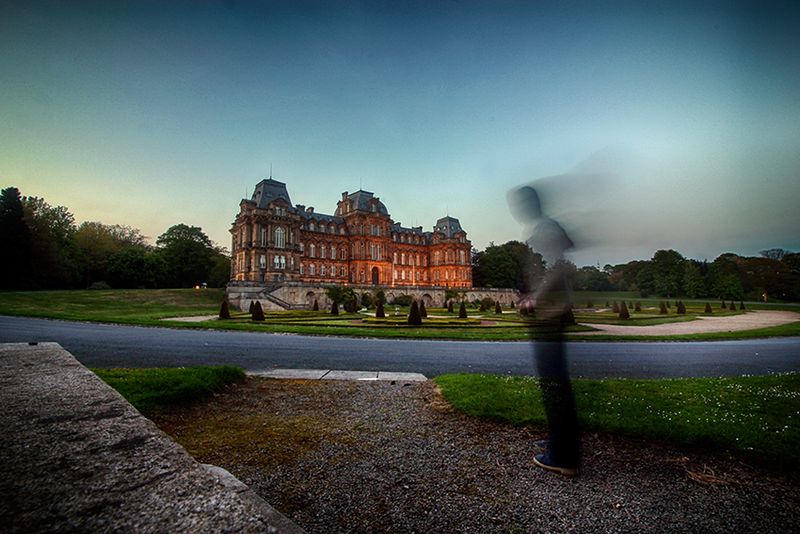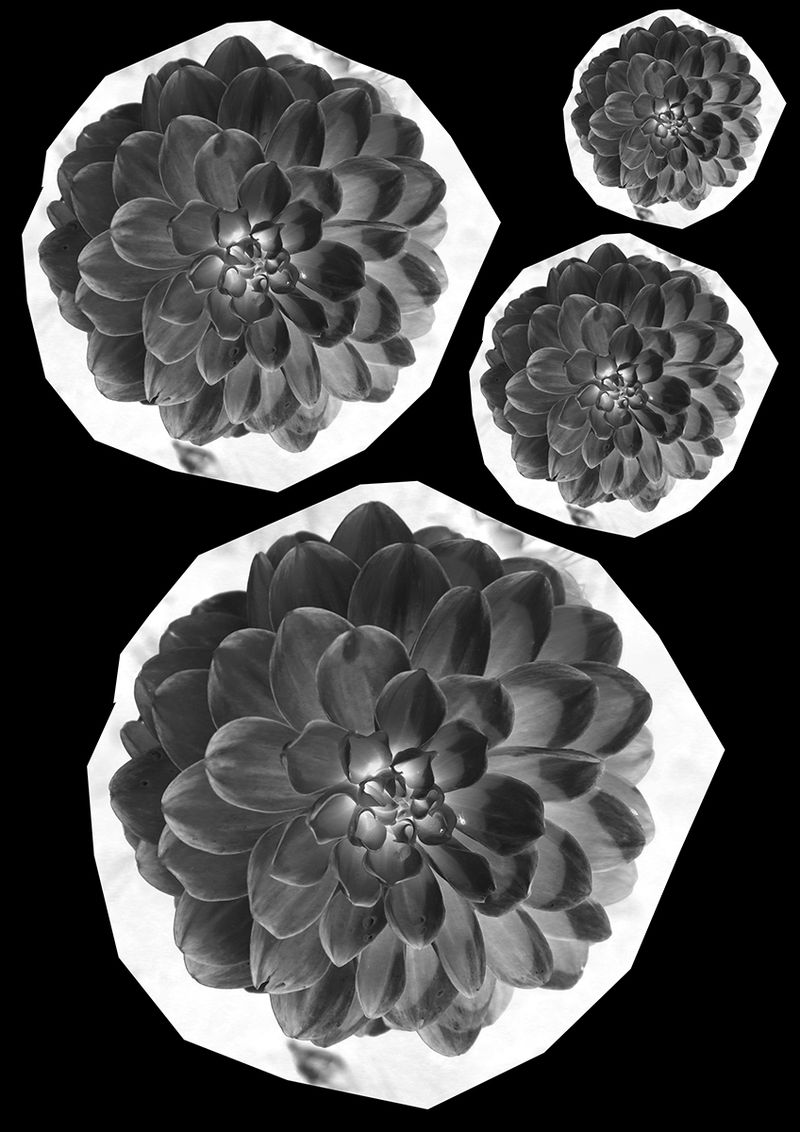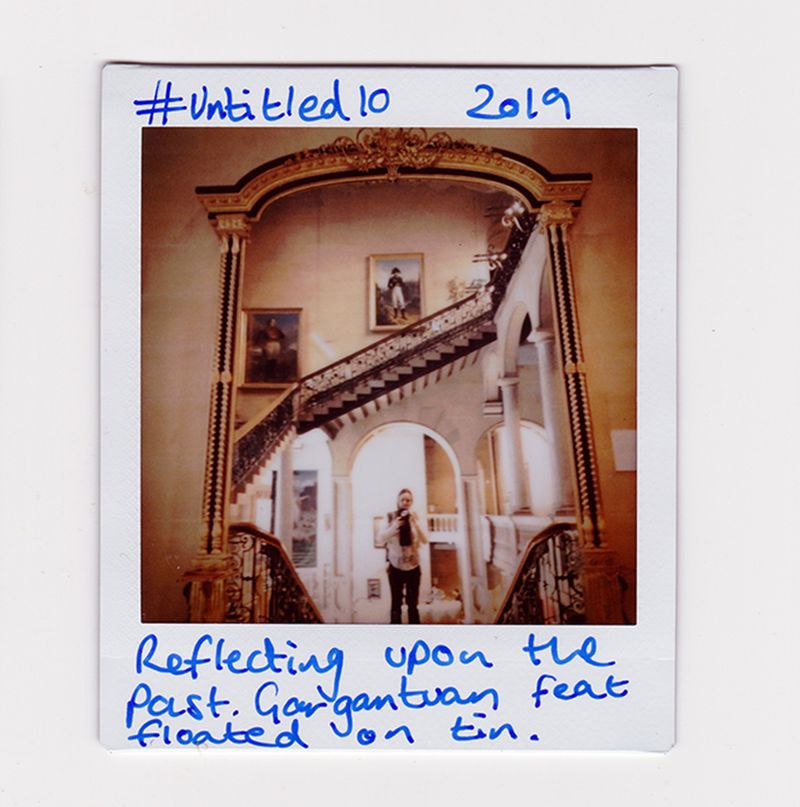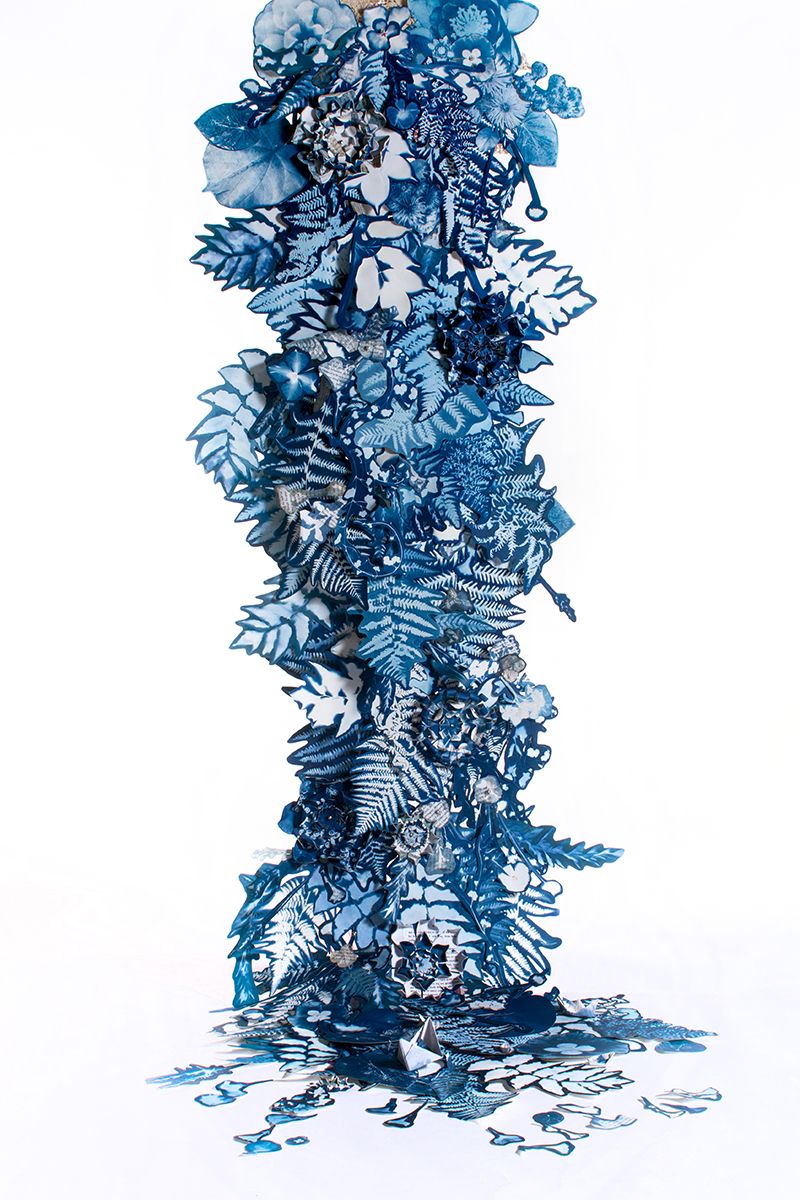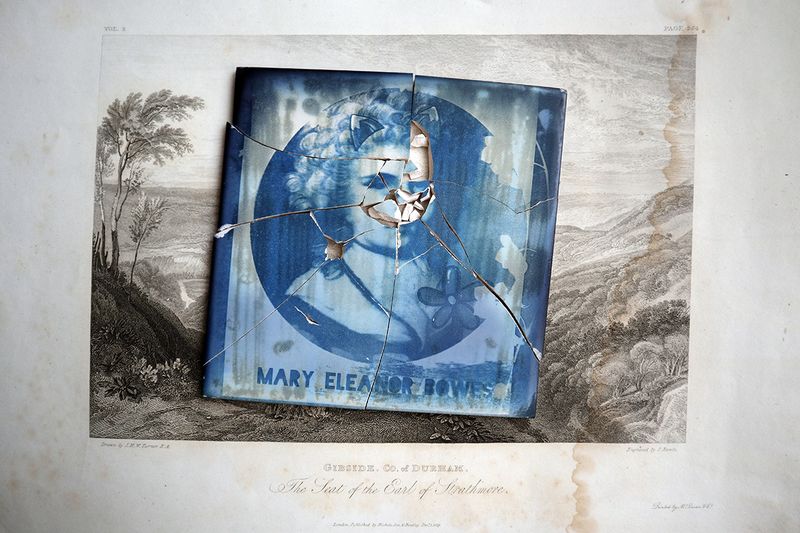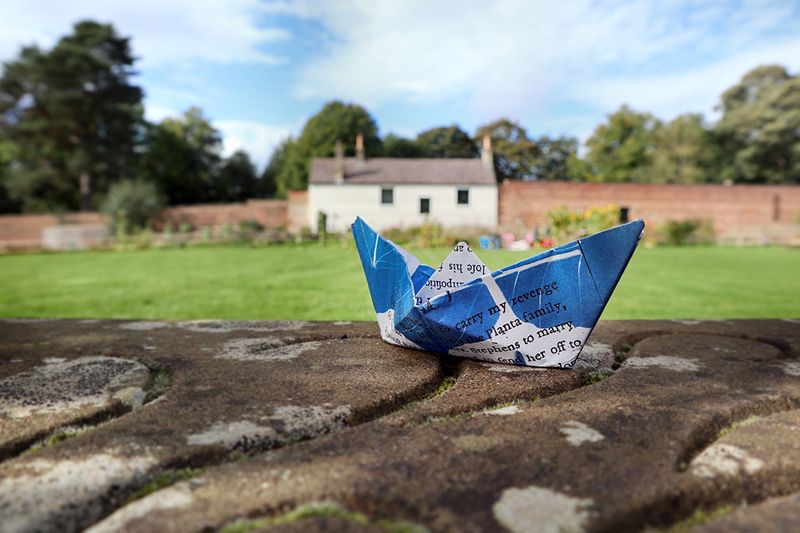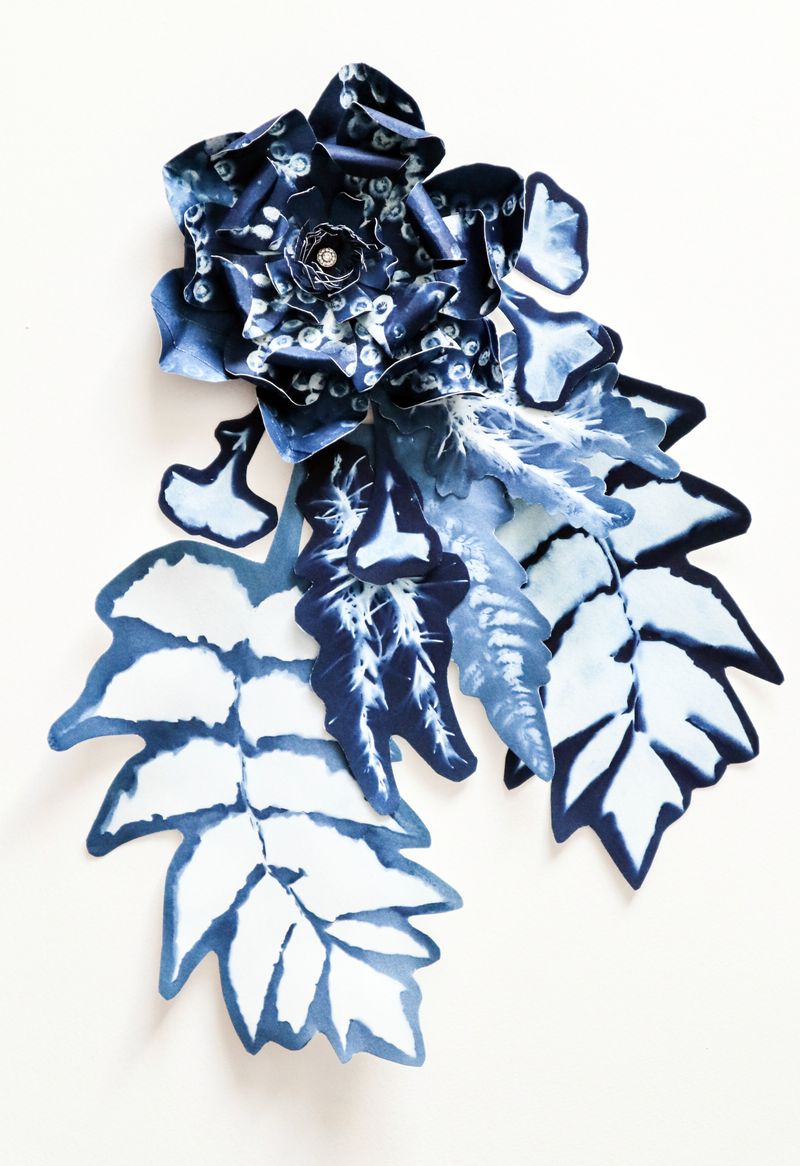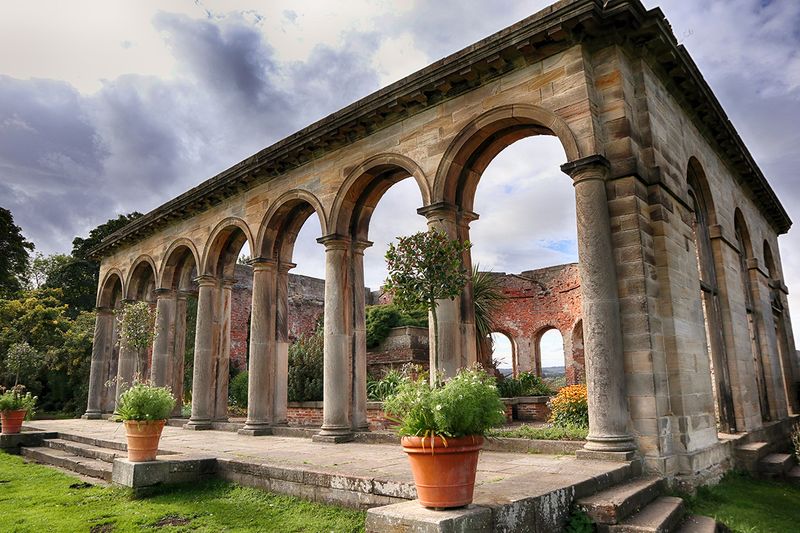Me & Mary Eleanor
-
Dates2019 - 2019
-
Author
What inspired you to focus on exploring the confessions of John Bowes grandmother, Mary Eleanor Bowes?
I wasn’t drawn to the project because of The Confessions of the Countess of Strathmore. I hadn’t actually heard of it, or Mary Eleanor Bowes, before I got started on the project. The book in question, I found out through research later, was a very dark and brutal object of domestic abuse.
I was in fact first drawn to the botany cabinet in the museum. The cabinet is a bizarre and beautiful object that is made in the Georgian style. There was no expense spared. It’s the finest wood, with delicately carved Queen Anne legs. It has images of people carved into the marquetry. But, it was made specifically to house plant specimens. It is so over the top. I was drawn to it because of it’s beauty, it’s function, and it’s elegant style.
I love working in the landscape, and using plants in my own artistic process, so it seemed like the perfect object to investigate for my project. I also find inspiration from heroines throughout history. I look for female influences in the sciences, and in fields of expertise during times when they would have actively been dissuaded, or even forced not to take part. The botany cabinet was a great object for me to investigate a range of things that are important to me.
Do Mary Eleanor Bowes confessions reveal anything about the past? Or about her relationship with John and Josephine Bowes? The collection?
This is where context is key. The Confessions of the Countess of Strathmore was a book that she was forced to write by her abusive husband who held her captive. He burned her, beat her, subjugated her, humiliated her, and tried to use the writings to defame her. He was a conniving man who specifically set out to marry a rich heiress for her fortune. Even though Mary Eleanor Bowes was exuberantly wealthy, she was still a woman, and in the 1770’s that was akin to being someone else’s property. Literally.
Her husband was incensed when he realised that he could not take her whole fortune due to a prenuptial agreement. This was one of the biggest factors in his forcing her to write the book. How much of the Confessions is true or factual is most definitely up for debate as she was forced to write it. I read it. It reads like someone is forcing her to write it. The past was a precarious place for a woman. No matter what your social standing was.
My original way in to the project was the Botany Cabinet. This is one of the very few objects in the collection that John Bowes had from his grandmother. There are the court documents in the archive, but I was more interested in Mary Eleanor Bowes’ ties to botany, the blue stocking brigade, and feminism.
What, if any, relevance do they have to modern life/times?
In Alabama they have just passed a restrictive abortion law that reduces a woman’s right to body autonomy to a distant dream. Mary Eleanor Bowes was seen as a decadent woman of very loose morals. She had abortions, illegitimate children, two marriages, and was a long time victim of extreme domestic abuse. Her perceived misdemeanours were brought out in a vicious court case in a savagely patriarchal system.
This American state law throws women in Alabama into a situation where their rights are essentially non-existent. They are not in control of their own bodies. Demonised and subjugated. Just like almost 300 years ago.
I realise that my own autonomy could be equally eroded if the political sway towards ultra Conservatism continues. It really makes my blood run cold. I think that it’s still a pertinent question about sex based oppression, and that we are very close to a political meltdown that could further impede our quest for equality. With leaders like BoJo and Trump I think we could all do with a little reminder of the heroines of the past that led the way, we are going to need their strength and resilience to inspire us.
What photographic practises will you be using?
Throughout the project I have used lots of combinations of photography. I used digital to record my process, I used polaroid to capture the first visit to the collection, and I have been using a photographic process called cyanotype printmaking for the main final piece. This process is a way of using light to create brilliant blue impressions of plants on paper. It was a process that was used by another of my heroines, Anna Atkins, who used the process to create the first photographically illustrated botanical book.
I have never had the chance to create a site specific piece of artwork, so for this piece I hope to incorporate the botanical cabinet itself. I have used pages from The Confessions of Strathmore to print flowers on as an act of rebellion on behalf of Mary Eleanor. Repurposing and reclaiming her object of oppression as a celebration of female intellect and resilience.
How will people engage with your process?
I am hoping that the installation of blue flowers will draw more attention to the Botany cabinet and what it stands for. I think that the rooms at the Bowes Museum are packed with interesting objects. There are so many things that it can be a sensory overload. Each object vying for your attention. I think the cascade of blue flowers will stand out dramatically against the mainly yellow, cream and brown room, to direct your full attention to the botany cabinet itself. I have mini zines and postcards that people can take away with them, and several blogs detailing the journey from first ideas to the final interpretation.
What experience do you want people to have?
I hope that more people will think about Mary Eleanor’s story and how it still resonates today. There is still a lot of domestic violence in the UK. Maybe her story can offer some strength and hope to those effected by it now. How can we reclaim all those lost female scientists? Botanists? Archaeologists?
We keep telling their stories. We make sure their contributions are part of our collective history.
NB: Additional to the Bowes Museum grant, I received a bursary from Sunderland Culture which has enabled me to create this piece of work. My first photographic sculpture.
